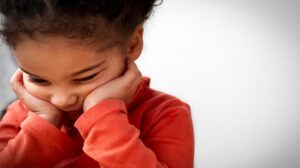
“When will the germs go away?” four-year-old Lilly asks me. My granddaughter has begun to express anxiety about COVID 19, and concern about the long quarantine. She is puzzled as to why her Daddy and Mommy must wear masks and gloves in the grocery store. Of particular concern, however, is when it will be safe to go to the playground again, or even to kindergarten. “The germs are everywhere” Lilly tells me, “I’m afraid of them.” Simultaneously, her younger cousin, Nastassia is experiencing nightmares that keep her awake at night. Previously a sound sleeper, she is now imagining bugs under her pillow, lizards walking down the hallway, and even jelly fish swimming under the bed.
My granddaughters, Lilly and Nastassia, turn five this summer. The world as they know it, has turned inside out and upside down, within a matter of months. For this age group, the line between fantastical thinking and reality is still very blurry. So, I’m not surprised by Nastassia’s dreams or Lilly’s questions, as they make visible their inner thoughts. These insights enable parents (and grandparents) to understand the fragile nature of their sensibilities, and to take steps to assist them to cope in a time of tremendous stress. For, this global pandemic has begun to affect young children’s emotions. Without mindful parental/caregiver interventions, the seeds of future anxieties might be sown right now.
Therefore, my mindful recommendation is geared towards parents/caregivers, grandparents, and anyone who is around young children for extended periods of time. Please re-consider the ways you talk about COVID 19 with family, friends, associates (in person or on the iPhone/iPad), in front of your children. Recently, my son was talking about death in front of Nastassia, who was playing with her doll house nearby. When I signaled for him to end the conversation, he replied “It’s okay, she doesn’t even know what death is.” I answered that she might not know the specifics, but certainly had a good idea about what it means. For, she’s hatching butterflies and one of her chrysalis shriveled up and fell off the branch earlier in the week. She knew something was different with that chrysalis, and with her mother’s guidance accepted that no butterfly would emerge.
We must remind ourselves that the little ones are watchers of everything we do, say, and even feel. They can pick up on even the most subtle of our cues or body language. Even when you think they are not listening, they are! So, parents must speak simply, hopefully, honestly and in ways that empower their children. They must understand what concepts are “developmentally appropriate” (NAEYC) at different age levels. Parents/caregivers can start small by sharing proactive ways that chase away germs and viruses, like hand washing. This little step can assuage some of the children’s fear.
Recently, Lilly sent me an “I Love You” note adorned with rainbows, flowers, hearts, and a bright blue sun. My heart leapt for joy, as she continues to appreciate the beauty of the world, and the ways loving relationships surmount the insurmountable in our lives. I will take her lead, and “accentuate the positive.”
